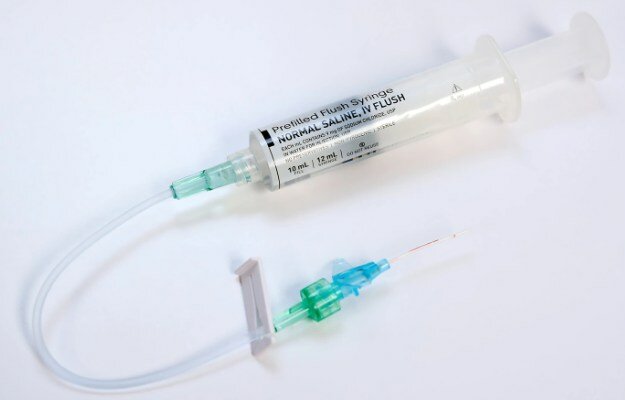Ablation for AF Reduces Mortality and Stroke
|
By HospiMedica International staff writers Posted on 09 Jul 2018 |
A new study suggests that catheter-based ablation lowers the risk of mortality, ischemic stroke, and hemorrhagic stroke in patients with atrial fibrillation (AF).
Researchers at the University of California Davis (UCD; USA) conducted a study to compare stroke and mortality in 4,169 AF patients who underwent ablation and 4,169 matched controls, selected by years of AF diagnosis, age, sex, and being alive the same number of days from the initial AF encounter to the ablation date. Those with valve disease, open maze, other arrhythmias, or implantable devices were excluded. Mortality and ischemic or hemorrhagic stroke were assessed, with adjustment for demographics, prior admissions with AF before the ablation, calendar year, and presence of chronic comorbidities.
The results revealed that while outcomes within 30 days of hospitalization were similar for both groups, long-term benefits of ablation became apparent after 3.6 years or more of follow-up. At that time, 84 patients died in the ablation group, compared to 189 in the control group; 55 patients in the ablation group suffered ischemic stroke, versus 86 in the control group; and 17 patients in the ablation group had hemorrhagic strokes, compared to 53 in the control group. The study was published on June 8, 2018, in Circulation: Arrhythmia and Electrophysiology.
“Ablation is currently only recommended when AF medications don't work, or aren't well tolerated. Less than two percent of patients undergo ablation early in the course of AF, when the procedure can be most beneficial,” said lead author professor of cardiovascular medicine Uma Srivatsa, MD. “Our data supports wider utilization of ablation along with improving the awareness of its benefits. Ablation may be considered as a primary treatment for everyone with the condition.”
Cardiac catheter ablation procedures are used to treat a variety of cardiac arrhythmias, especially supraventricular tachyarrhythmias such as AF, atrial flutter, and atrial tachycardia. The procedures involve advancing a catheter into the heart and selectively ablating certain areas of tissue in order to prevent the spread of electrical signals that give rise to the arrhythmia. The procedure is low-risk and usually takes 2-4 hours. It is most often performed in an electrophysiology or a cardiac catheterization lab. It is successful in about 90% of the people who have it.
Related Links:
University of California Davis
Researchers at the University of California Davis (UCD; USA) conducted a study to compare stroke and mortality in 4,169 AF patients who underwent ablation and 4,169 matched controls, selected by years of AF diagnosis, age, sex, and being alive the same number of days from the initial AF encounter to the ablation date. Those with valve disease, open maze, other arrhythmias, or implantable devices were excluded. Mortality and ischemic or hemorrhagic stroke were assessed, with adjustment for demographics, prior admissions with AF before the ablation, calendar year, and presence of chronic comorbidities.
The results revealed that while outcomes within 30 days of hospitalization were similar for both groups, long-term benefits of ablation became apparent after 3.6 years or more of follow-up. At that time, 84 patients died in the ablation group, compared to 189 in the control group; 55 patients in the ablation group suffered ischemic stroke, versus 86 in the control group; and 17 patients in the ablation group had hemorrhagic strokes, compared to 53 in the control group. The study was published on June 8, 2018, in Circulation: Arrhythmia and Electrophysiology.
“Ablation is currently only recommended when AF medications don't work, or aren't well tolerated. Less than two percent of patients undergo ablation early in the course of AF, when the procedure can be most beneficial,” said lead author professor of cardiovascular medicine Uma Srivatsa, MD. “Our data supports wider utilization of ablation along with improving the awareness of its benefits. Ablation may be considered as a primary treatment for everyone with the condition.”
Cardiac catheter ablation procedures are used to treat a variety of cardiac arrhythmias, especially supraventricular tachyarrhythmias such as AF, atrial flutter, and atrial tachycardia. The procedures involve advancing a catheter into the heart and selectively ablating certain areas of tissue in order to prevent the spread of electrical signals that give rise to the arrhythmia. The procedure is low-risk and usually takes 2-4 hours. It is most often performed in an electrophysiology or a cardiac catheterization lab. It is successful in about 90% of the people who have it.
Related Links:
University of California Davis
Latest Critical Care News
- CPR Guidelines Updated for Pediatric and Neonatal Emergency Care and Resuscitation
- Ingestible Capsule Monitors Intestinal Inflammation
- Wireless Implantable Sensor Enables Continuous Endoleak Monitoring
- Pulse Oximeter Index Offers Non-Invasive Guides for Fluid Therapy
- Wearable Patch for Early Skin Cancer Detection to Reduce Unnecessary Biopsies
- 'Universal' Kidney to Match Any Blood Type
- Light-Based Technology to Measure Brain Blood Flow Could Diagnose Stroke and TBI
- AI Heart Attack Risk Assessment Tool Outperforms Existing Methods
- Smartphone Imaging System Enables Early Oral Cancer Detection
- Swallowable Pill-Sized Bioprinter Treats GI Tract Injuries

- Personalized Brain “Pacemakers” Could Help Patients with Hard-To-Treat Epilepsy
- Microscopic DNA Flower Robots to Enable Precision Medicine Delivery
- Origami Robots to Deliver Medicine Less Invasively and More Effectively
- Improved Cough-Detection Technology Aids Health Monitoring
- AI Identifies Children in ER Likely to Develop Sepsis Within 48 Hours
- New Radiofrequency Therapy Slows Glioblastoma Growth
Channels
Surgical Techniques
view channel
Robotic Assistant Delivers Ultra-Precision Injections with Rapid Setup Times
Age-related macular degeneration (AMD) is a leading cause of blindness worldwide, affecting nearly 200 million people, a figure expected to rise to 280 million by 2040. Current treatment involves doctors... Read more
Minimally Invasive Endoscopic Surgery Improves Severe Stroke Outcomes
Intracerebral hemorrhage, a type of stroke caused by bleeding deep within the brain, remains one of the most challenging neurological emergencies to treat. Accounting for about 15% of all strokes, it carries... Read morePatient Care
view channel
Revolutionary Automatic IV-Line Flushing Device to Enhance Infusion Care
More than 80% of in-hospital patients receive intravenous (IV) therapy. Every dose of IV medicine delivered in a small volume (<250 mL) infusion bag should be followed by subsequent flushing to ensure... Read more
VR Training Tool Combats Contamination of Portable Medical Equipment
Healthcare-associated infections (HAIs) impact one in every 31 patients, cause nearly 100,000 deaths each year, and cost USD 28.4 billion in direct medical expenses. Notably, up to 75% of these infections... Read more
Portable Biosensor Platform to Reduce Hospital-Acquired Infections
Approximately 4 million patients in the European Union acquire healthcare-associated infections (HAIs) or nosocomial infections each year, with around 37,000 deaths directly resulting from these infections,... Read moreFirst-Of-Its-Kind Portable Germicidal Light Technology Disinfects High-Touch Clinical Surfaces in Seconds
Reducing healthcare-acquired infections (HAIs) remains a pressing issue within global healthcare systems. In the United States alone, 1.7 million patients contract HAIs annually, leading to approximately... Read moreHealth IT
view channel
Printable Molecule-Selective Nanoparticles Enable Mass Production of Wearable Biosensors
The future of medicine is likely to focus on the personalization of healthcare—understanding exactly what an individual requires and delivering the appropriate combination of nutrients, metabolites, and... Read moreBusiness
view channel
Philips and Masimo Partner to Advance Patient Monitoring Measurement Technologies
Royal Philips (Amsterdam, Netherlands) and Masimo (Irvine, California, USA) have renewed their multi-year strategic collaboration, combining Philips’ expertise in patient monitoring with Masimo’s noninvasive... Read more
B. Braun Acquires Digital Microsurgery Company True Digital Surgery
The high-end microsurgery market in neurosurgery, spine, and ENT is undergoing a significant transformation. Traditional analog microscopes are giving way to digital exoscopes, which provide improved visualization,... Read more
CMEF 2025 to Promote Holistic and High-Quality Development of Medical and Health Industry
The 92nd China International Medical Equipment Fair (CMEF 2025) Autumn Exhibition is scheduled to be held from September 26 to 29 at the China Import and Export Fair Complex (Canton Fair Complex) in Guangzhou.... Read more














